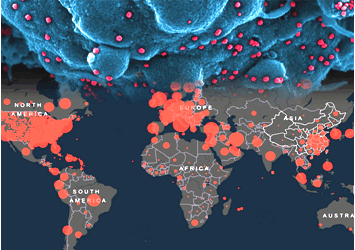A HOLISTIC PERSPECTIVE ON THE IMPACT OF COVID-19 ON THE GLOBAL POPULATION IN TERMS OF MORBIDITY AND MORTALITY RATES: IS HUMANITY READY TO FACE FUTURE PANDEMICS?
Keywords:
COVID-19, modeling, morbidity, mortality, public health, pandemicAbstract
For now, the spotlight is turning away from the recent Corona epidemic, but this should not pass without some important lessons being learned. Knowing that the epidemic is continuing and spreading, with 662 million new cases recorded in the year 2023. The arms race between countries has led to increased investment in biological weapons, highlighting the military human participation in spreading epidemics. Despite scientific and technical progress, humanity is not equipped to deal with microbial epidemics, and therefore the safeguards taken by public health officials in combating epidemics must be re-evaluated. The current mortality rate for SARS-CoV-2 is low, but some other viral diseases have high mortality rates, so if a pandemic occurs due to it worldwide, as happened with COVID-19, it will be a disaster. The WHO database provides a comprehensive view of COVID-19 cases and deaths, enabling public health measures to be implemented globally according to a recent revision until the end of 2023. Major affected countries in terms of total morbidity and mortality include the USA, India, France, Germany, Brazil, Japan, Russia, Turkey, Spain, Viet Nam, Australia, China, Argentina, Mexico, Indonesia, Poland, Colombia, Austria, Portugal, Greece, Ukraine, Chile, and Malaysia. The Coronavirus appears to affect developed countries more than developing countries, but the efficiency in collecting cases affects the reliability of interpreting data in this way in general. Despite the progress made, much effort remains to be made to combat the disease in its mild form at this time. Modeling disease spread helps understand community characteristics and assists public health authorities with management and control measures. Collaboration and quantitative risk index projections are crucial for pandemic prevention and control.

Peer Review History:
Received: 6 October 2023; Revised: 7 November; Accepted: 28 December; Available online: 15 January 2024
Academic Editor: Dr. Sally A. El-Zahaby , Pharos University in Alexandria, Egypt, sally.elzahaby@yahoo.com
, Pharos University in Alexandria, Egypt, sally.elzahaby@yahoo.com
Reviewers:
 Prof. Hassan A.H. Al-Shamahy, Sana'a University, Yemen, shmahe@yemen.net.ye
Prof. Hassan A.H. Al-Shamahy, Sana'a University, Yemen, shmahe@yemen.net.ye
 Dr. Ogbonna B. Onyebuchi, Nnamdi Azikiwe University, Awka, Nigeria, summitpharm@yahoo.com
Dr. Ogbonna B. Onyebuchi, Nnamdi Azikiwe University, Awka, Nigeria, summitpharm@yahoo.com
Downloads

Published
How to Cite
Issue
Section

This work is licensed under a Creative Commons Attribution-NonCommercial 4.0 International License.









 .
.